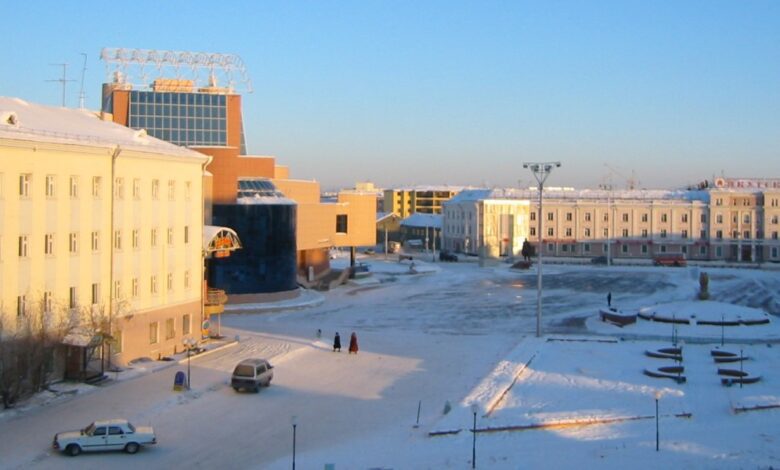
On our planet, there are places where the thermometer shows temperatures unimaginable for most people, and the icy air can instantly freeze your eyelashes. In such regions, cars are left running for hours, and the ground remains locked in ice even during the summer months. Yet, these harsh lands are far from empty. From the endless Siberian plains to the northern reaches of Canada, hundreds of thousands of people call these frozen worlds home, building their lives against all the odds of extreme weather conditions.
Yakutsk – the world’s coldest capital
In the heart of Eastern Siberia lies Yakutsk, rightfully considered the coldest large city on Earth. During winter, temperatures plunge to -50°C, and historic lows have neared -64°C. Founded almost four centuries ago as a Russian fort, the city has always stood as a key outpost for conquering the vastness of Yakutia. Despite extreme conditions, Yakutsk has grown into a major urban, economic, and cultural center. Its entire infrastructure is built on permafrost that never fully thaws. This forces buildings to be elevated on tall stilts, so that the warmth from inside doesn’t melt the frozen ground beneath. For locals, living with ice is simply part of life, and they’ve developed a unique resilience—turning every winter into a fresh test of endurance and adaptability.
Today, Yakutsk is home to over 350,000 people, making it one of the most densely populated cities in northeastern Russia. The population growth in recent decades is driven by the development of the mining industry and its role as an administrative and educational hub. The city boasts universities, scientific institutes, and an airport that, while struggling, maintains Yakutsk’s connection with the rest of the country. Living in such extreme conditions requires constant effort. In winter, the streets are buried under deep snow and the icy air stings your face. Still, life in the city doesn’t stop: schools and markets remain open, and children, bundled in multiple layers, play outdoors.
Oymyakon and other coldest places on Earth
About 800 kilometers from Yakutsk lies the small village of Oymyakon, which vies for the title of the world’s coldest inhabited place. In 1926, temperatures here hit -71.2°C—a figure that’s hard to even imagine. Founded by nomadic reindeer herders in the 1920s, this Siberian settlement is home to fewer than a thousand people. For nine long winter months, the sun rarely appears and the ground remains frozen solid. Survival depends on hunting, reindeer herding, and eating frozen fish, since farming is impossible. Even cars are left running for hours so their engines don’t freeze.
But it’s not just Siberia that’s famous for its extreme cold. In Canada, the capital of the Northwest Territories, Yellowknife, is also known for its harsh climate. In winter, temperatures here can drop below -40°C. Founded in 1934, the city thrives on mining and nature tourism. Its population exceeds 20,000. The long winters are offset by spectacular views of the Northern Lights and a vibrant, unique culture. Another example is Norilsk in northern Russia—one of the coldest and most isolated industrial cities in the world. Founded in 1935, it was built mainly by prisoners during the Stalin era. The average winter temperature hovers around -30°C, and the polar night lasts for weeks. The city’s economy relies on nickel and copper mining, with a population of over 180,000.
Survival secrets in permafrost conditions
Daily life in cities like Yakutsk, Oymyakon, Norilsk, or Yellowknife means solving challenges that go far beyond simple insulation. Transportation, housing, food, and communications all require innovative solutions. Buildings are constructed on stilts, pipelines run above ground, and cars are left running overnight. Everyday routines are entirely dictated by the climate. People wear multiple layers of thermal clothing, schools close when temperatures drop below -55°C, and medical services are always prepared to treat frostbite. Yet, these communities share a special sense of collective pride. In places where winter lasts nearly all year, warmth and mutual support between people become the most valuable resources.






